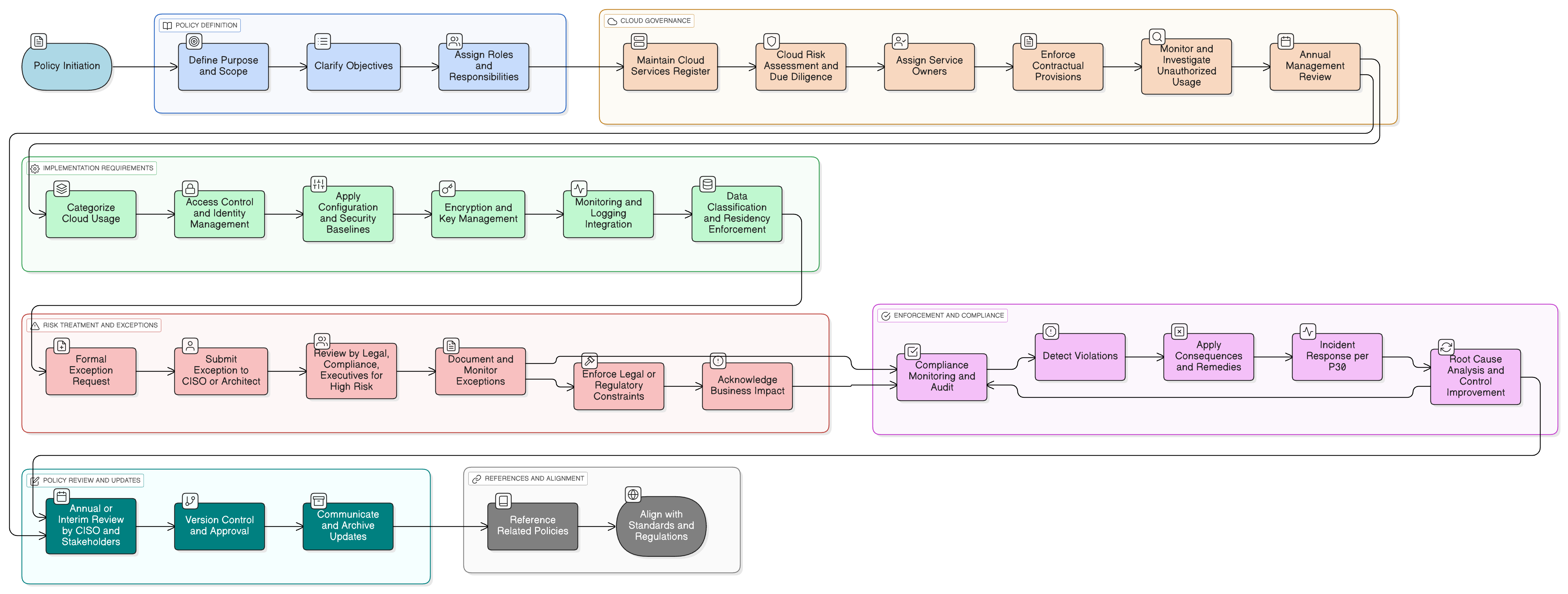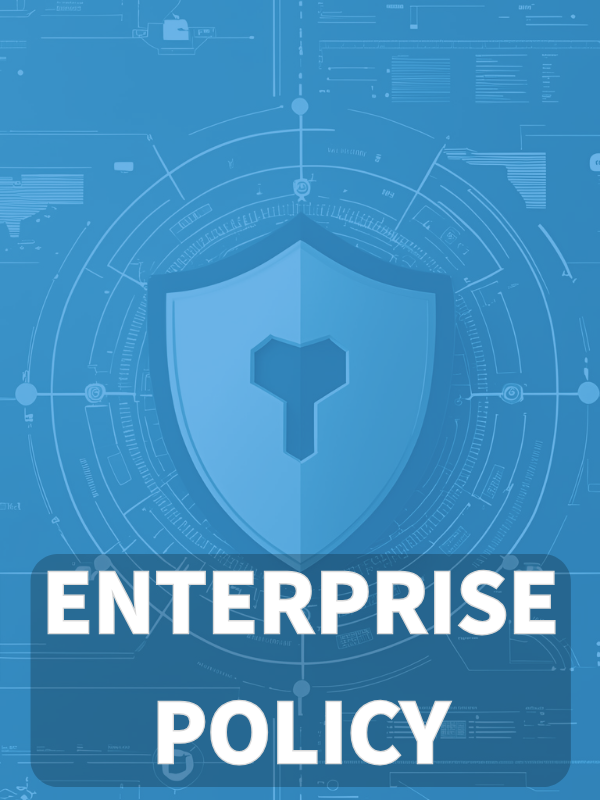Overview
The Cloud Usage Policy sets mandatory requirements for secure, compliant use of all cloud services, defining roles, controls, and governance for every environment.
Comprehensive Cloud Security
Mandates risk-based controls, data protection, and ongoing compliance across all cloud service models and providers.
Centralized Governance
Includes a Cloud Services Register and clear accountability for provider selection, lifecycle, and policy exception management.
Strict Access Controls
Enforces MFA, RBAC, SSO, and least privilege principles for all administrative and privileged cloud accounts.
Read Full Overview
Policy Diagram

Click diagram to view full size
What's Inside
Scope and Rules of Engagement
Cloud Provider Due Diligence
Access Control & MFA Requirements
Centralized Cloud Services Register
Configuration & Data Residency Controls
Incident Response Integration
Framework Compliance
🛡️ Supported Standards & Frameworks
This product is aligned with the following compliance frameworks, with detailed clause and control mappings.
| Framework | Covered Clauses / Controls |
|---|---|
| ISO/IEC 27001:2022 | |
| ISO/IEC 27002:2022 | |
| NIST SP 800-53 Rev.5 | |
| EU GDPR |
Article 28Article 32Chapter V
|
| EU NIS2 | |
| EU DORA | |
| COBIT 2019 |
Related Policies
Audit Compliance Monitoring Policy
Supports audit readiness and continuous assurance that cloud controls are enforced and monitored.
Information Security Policy
Establishes the overarching principles governing secure system and service operation, which this policy enforces in the cloud context.
Change Management Policy
All cloud configuration changes must follow change control procedures outlined in P5.
Data Classification And Labeling Policy
Determines how data is assessed prior to cloud transfer and how controls such as encryption and residency are applied.
Cryptographic Controls Policy
Provides standards for encryption, key management, and cryptographic algorithm usage, directly applied in cloud service configurations.
Logging And Monitoring Policy
Specifies requirements for log collection, retention, and analysis which must be enforced in cloud environments.
Incident Response Policy
Defines escalation, containment, and remediation procedures for cloud-related security events.
About Clarysec Policies - Cloud Usage Policy
Effective security governance requires more than just words; it demands clarity, accountability, and a structure that scales with your organization. Generic templates often fail, creating ambiguity with long paragraphs and undefined roles. This policy is engineered to be the operational backbone of your security program. We assign responsibilities to the specific roles found in a modern enterprise, including the CISO, IT Security, and relevant committees, ensuring clear accountability. Every requirement is a uniquely numbered clause (e.g., 5.1.1, 5.1.2). This atomic structure makes the policy easy to implement, audit against specific controls, and safely customize without affecting document integrity, transforming it from a static document into a dynamic, actionable framework.
Contractual Safeguards for Providers
Mandates right-to-audit, data residency, breach notification, and service continuity in all cloud vendor contracts.
Tailored Role Assignment
Specifies responsibilities for CISO, Cloud Security Architect, Legal, and Service Owners for lifecycle and compliance management.
Automated Detection of Shadow IT
Requires active network, DNS, and log monitoring to identify and respond to unauthorized cloud usage.
Frequently Asked Questions
Built for Leaders, By Leaders
This policy was authored by a security leader with 25+ years of experience deploying and auditing ISMS frameworks for global enterprises. It's designed not just to be a document, but a defensible framework that stands up to auditor scrutiny.
